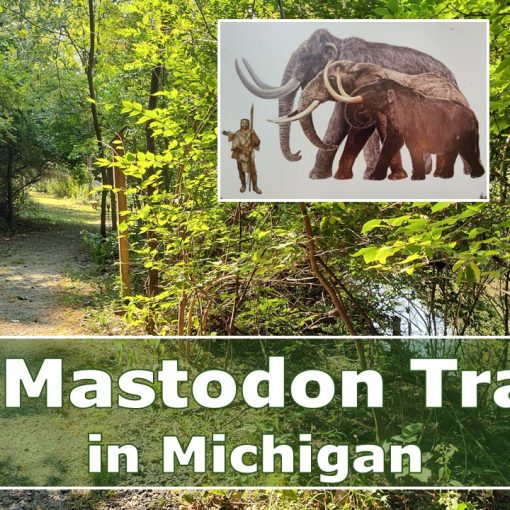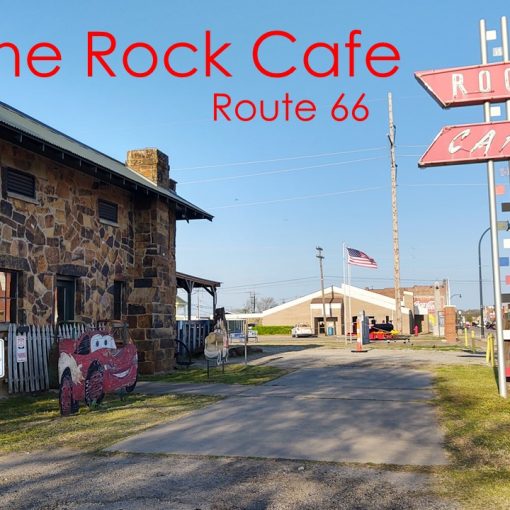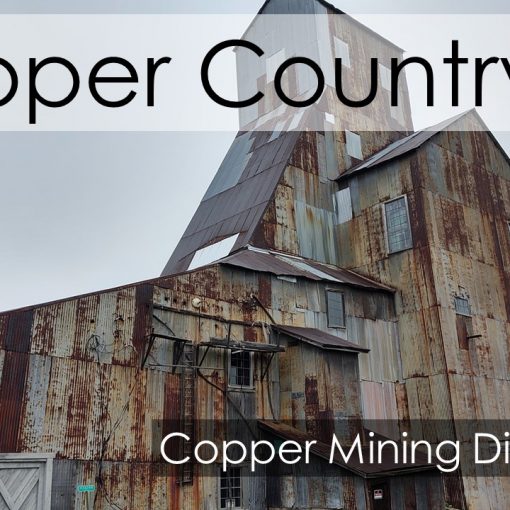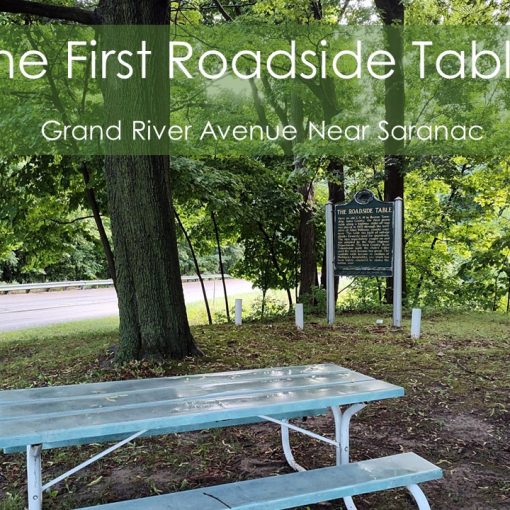Near White Cloud, Michigan in Newaygo County there had once been the largest desert east of the Mississippi, The Big Prairie Desert. What? I had no idea! My husband, Chuck, always finds curious history. Starting in 1865 until the 1930’s this 2,000 acre area had been an enormous sandy expanse. We headed north for a look-see.
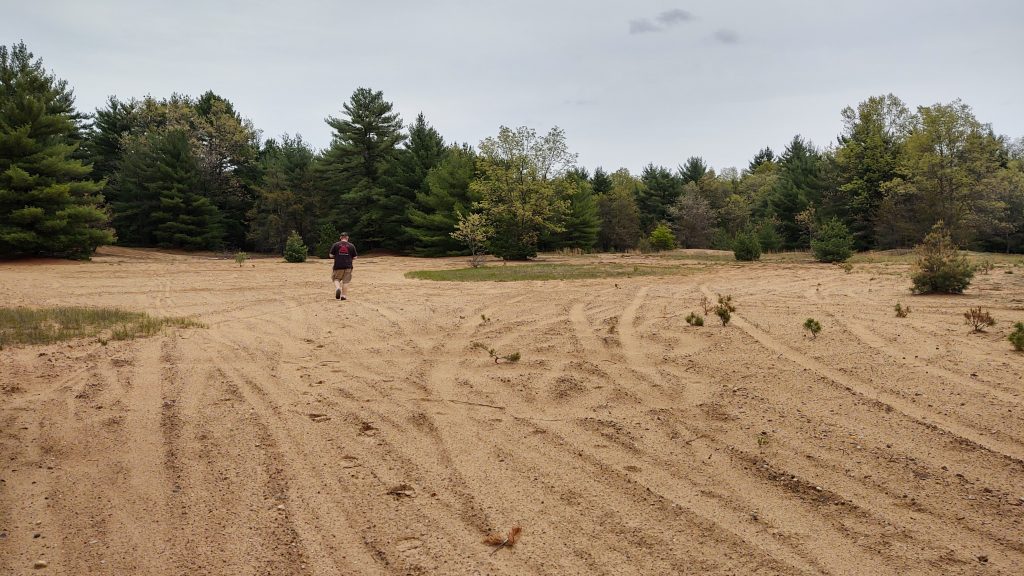
The Big Prairie Desert had once stretched three miles north to south and was two miles wide.
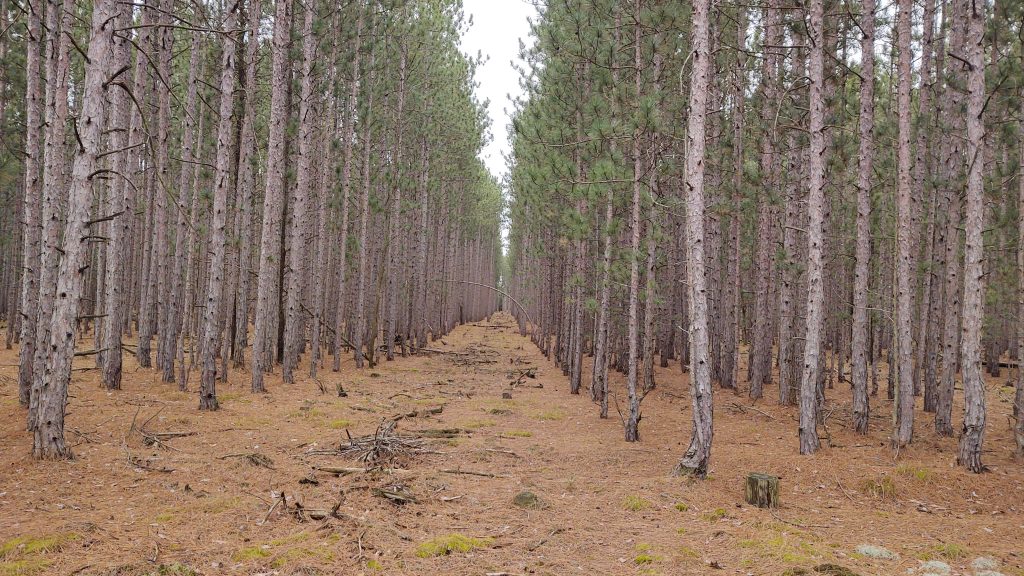
What’s the story of this land? Why did picnics happen here? How did the pine trees evolve?
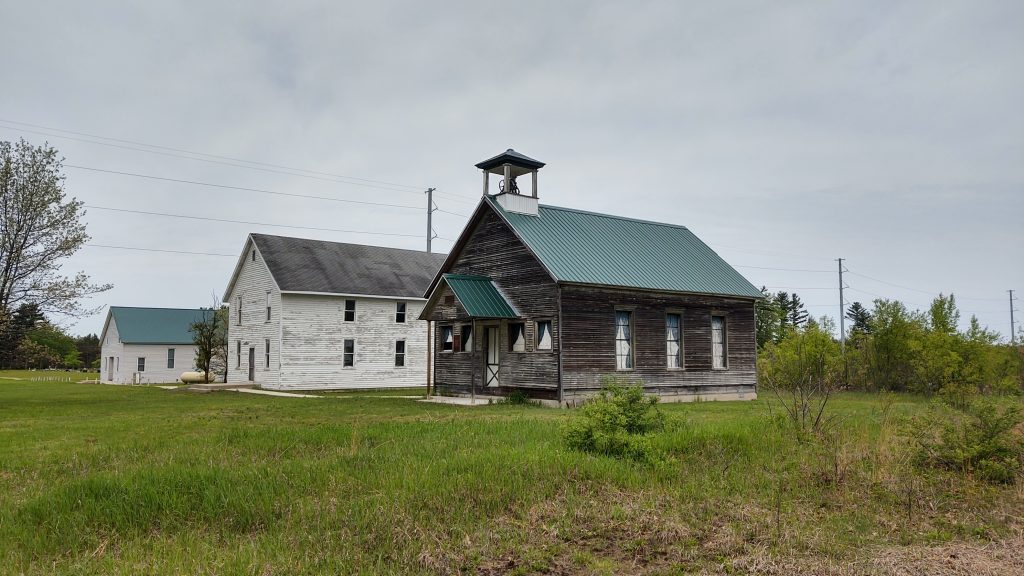
stands the Big Prairie Community Church and Township Hall.
We found a small community church and township hall. But where was the desert? Was there still a desert? Join Chuck and I as we visit these acres. I’m always impressed with his curiosity and knowledge!
Big Prairie Township
For centuries this vista had been nurtured by the Ottawa Nation. Then in 1847 the tribes surrendered their rights under the Treaty of Fond du Lac. In 1849 John McBride scouted the area and quickly set up a homestead.
Big Prairie Township was one of the first areas to be settled by Europeans in Michigan. John McBride soon sold his claim to Ephraim H. Utley. Many families followed Utley and built their homesteads along the perimeter of the 2,000 acre Big Prairie.
The top layer of soil, which was fertile and rich, had laid like a thin carpet over the sand. Settlers soon realized that the soil was shallow and drained quickly. This was not ideal for long term, sustainable farming. Many had turned their focus to lumber from the surrounding forests as a means to make a living.
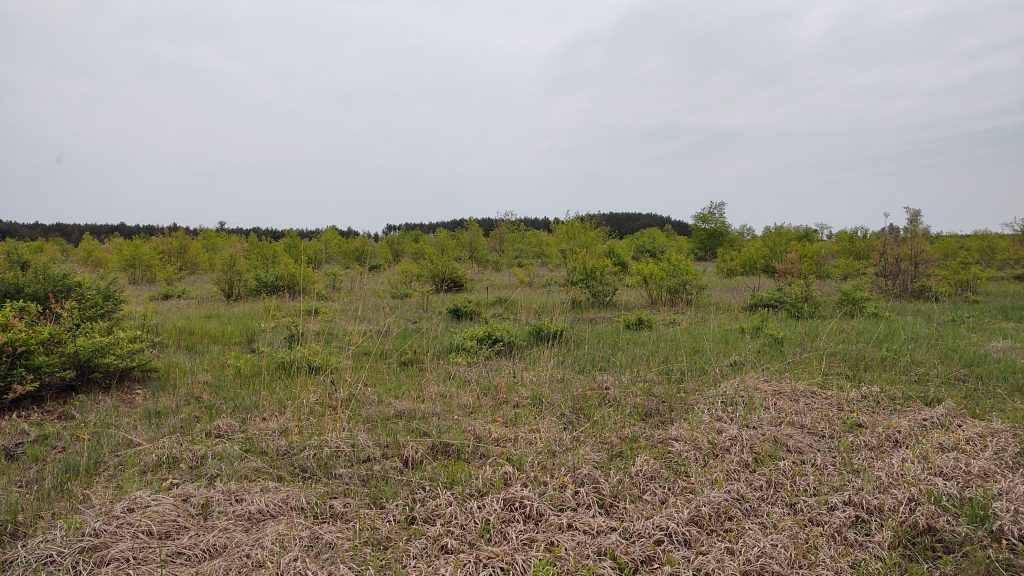
So on March 20, 1852 the location officially became known as “Big Prairie Township.” Their first election was in April of that year. John Betts was named their first supervisor. Mind you, this was before The Civil War. (1861-1865) The second and last supervisor was John Barton, as the short-lived settlement had been abandoned beginning in 1865.
1865 “The Blowing”
Starting in 1865 wind blew over the prairie eroding the thin layer of top soil. Dorcus Hayes had been interviewed in the 1960’s and reported that her father had told the tale of “The Blowing” and getting lost on the prairie coming home from church. The this swirling sand had caused a miserable lack of visibility.
Abandoned
By 1867 homes and farm stands had been abandoned.
Hummocks
The eroding top soil gave way to continued sand storms. Hummocks of sand developed over grassy mounds. Some were 6-8 feet tall.
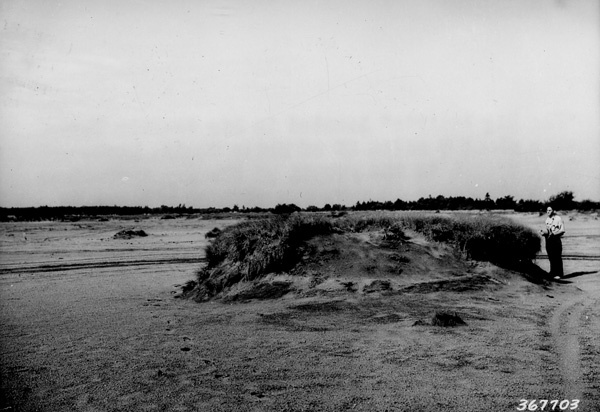
Photo Credit: NARA and DIVD Archives
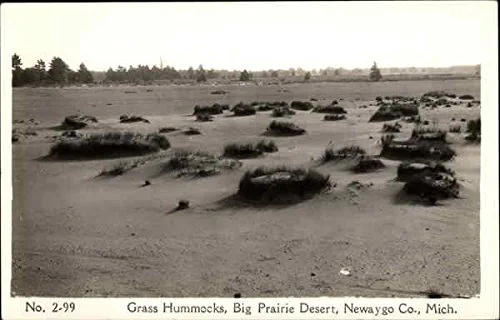
Photo Credit: Amazon’s Antique Postcard
Asylum Land
By 1880 Big Prairie Township had succumbed to erosion and suffered from abandonment, so the land was reclaimed by the state and listed as “Asylum Land” on maps. What does that mean? Well, Chuck delved into history and learned that the proceeds from the sale of these parcels would benefit the “State Institution for the Education of the Deaf, Dumb and Blind.” However, with the poor condition of the land, it had been decades before this land brought in any revenue for the state school.
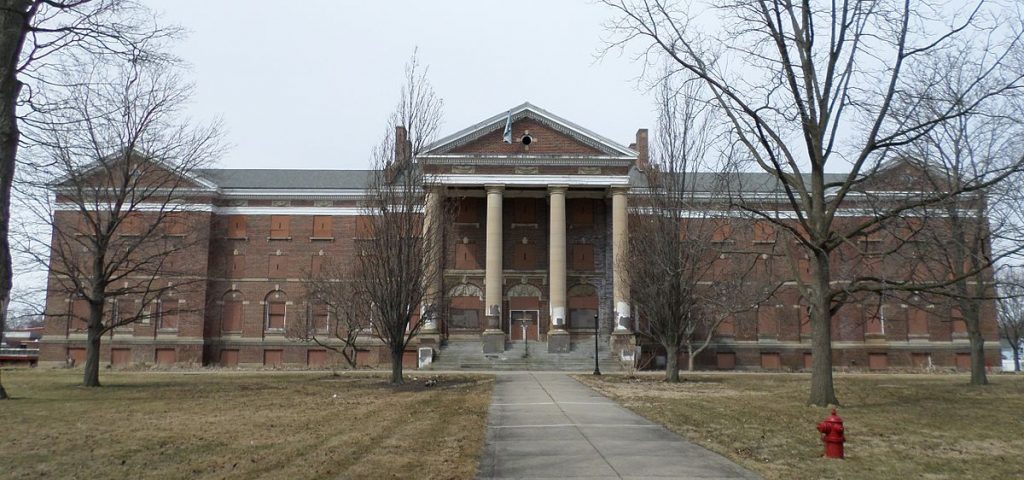
It’s still housed in one of the original buildings.
Photo Credit: The Michigan School for the Deaf
Big Prairie Desert – Picnic Destination
In the mean time this desolate Big Prairie Desert continued to grow through the 1920’s-1930’s. People would come to the area on daytrips to enjoy picnics and recreation. There had been some talk of further developing this area as a tourist spot, however the nearby locals were not interested.
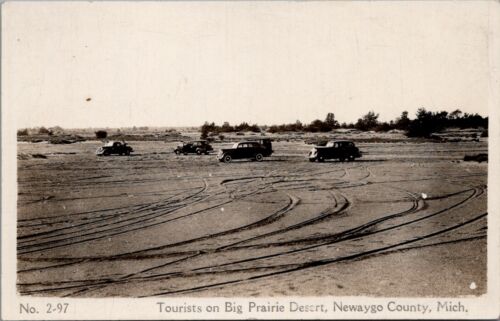
Photo Credit: Ebay Postcard $16.00
Doran Ditlow
Doran Ditlow had been interviewed on November 29, 2011. She recalled, “During the 1940’s I attended school in White Cloud MI. At least one year we went to Big Prairie Desert for last day of school. I recall hummocks with grass on top separated by large sandy patches. Most of the Big Prairie area was planted in Pine trees during late 30’s, through at least the early 60’s. I worked for USFS in fall of 1961 planting Red Pine trees. We planted about 750,000 trees. One area we planted was called Stearns Prairie, 20 or 40 acres, just West of the Prairie Cemetery.”
The Everett Big Prairie Cemetery
Some unsung heroes in this story were a group of women who called themselves, “The Old Social.” In the early 1900’s the Everett Cemetery was being covered by drifting sands. A significant mound had developed at the eastern entrance. With many of their relatives and community members having been buried there, the ladies wanted to preserve these gravesites.
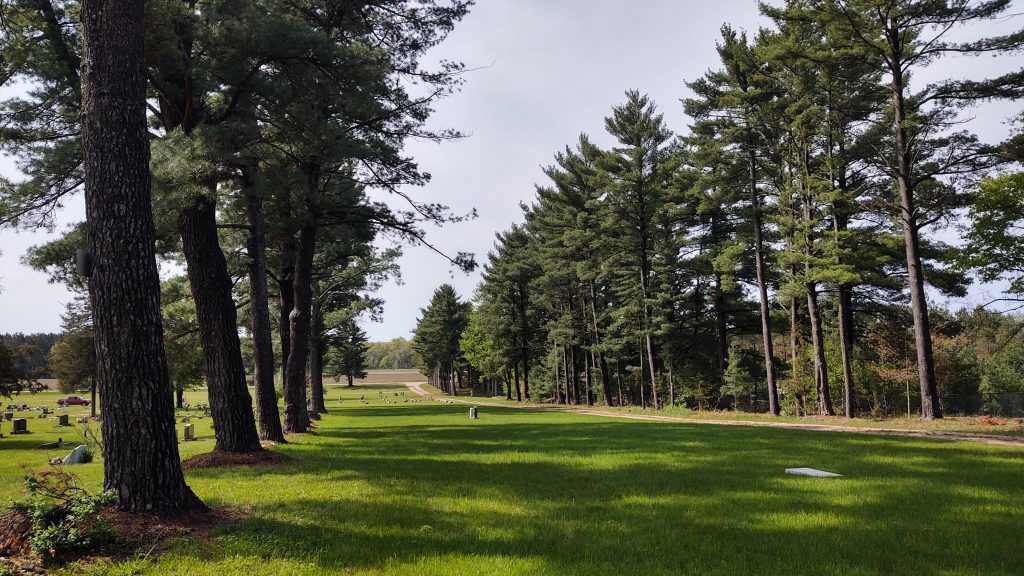
First, the ladies used straw and hay along with brush to try to block the sand. But the sand blew right through the blockade. Next, the team transplanted trees and thick grasses. These trees proved to be helpful in fighting against the blowing sand. Then in 1922, that’s one hundred years ago, the women planted more trees along the eastern side. The grave sites were saved! Many of these trees are still here today!
The National Forest Service
The National Forest Service took over ownership in 1933. The Work Progress Administration had been formed by the national government to put men back to work during The Great Depression. These workers began planting trees. A small plot had been planted in 1936, followed by yet another.
Unfortunately, “The Blow” had continued and destroyed their hard work from 1938 through 1940. So, these men returned in 1941 and began toiling over this land with new seedlings.
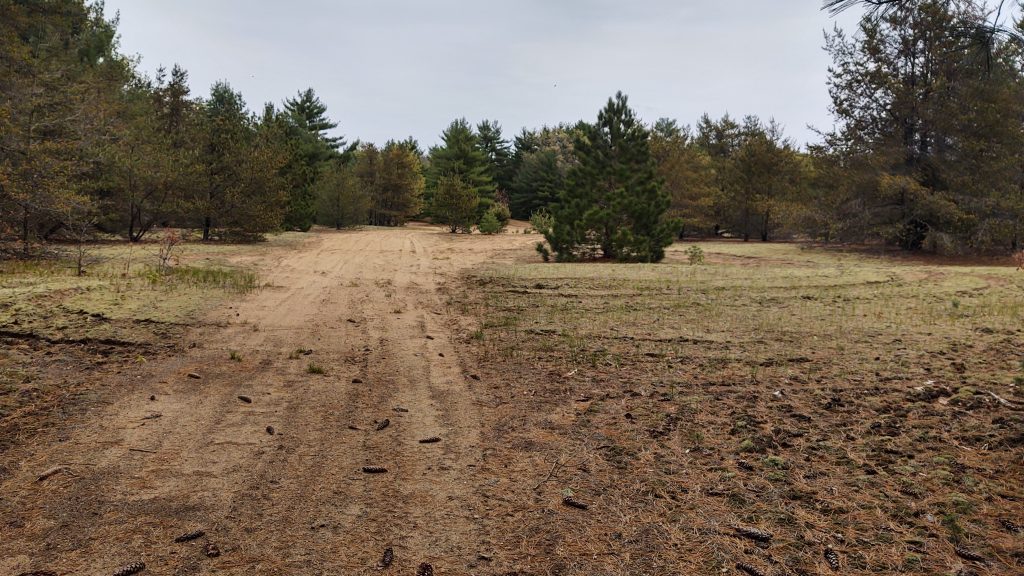
Conscientious Objector Camp had been formed in 1942. These men continued the process of planting trees in 1942 and 1943 , then in 1946 and 1947.
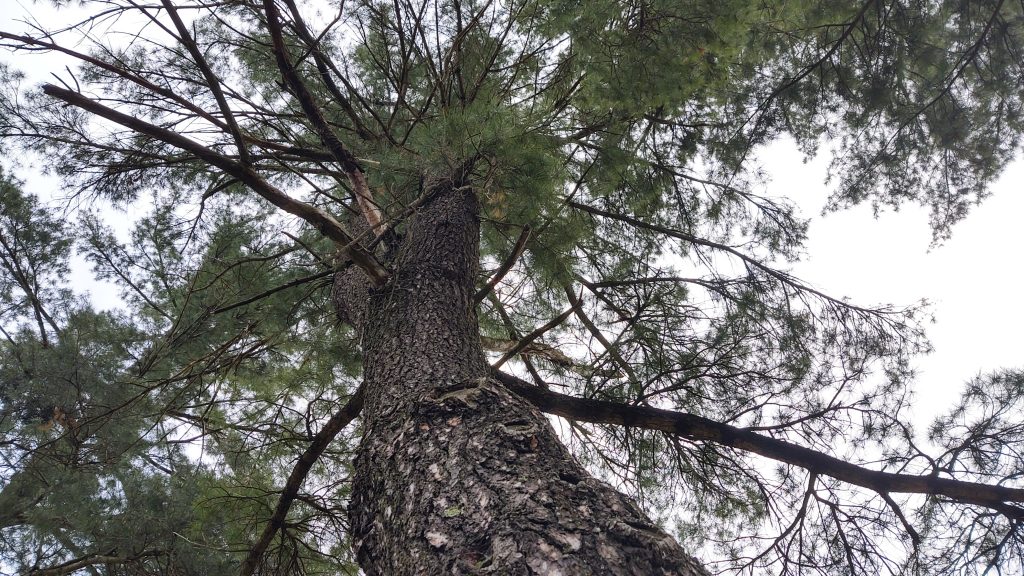
By 1965 over 13 million trees had taken root over 945 acres. In 1974 the first 75 acres were harvested for pulp wood.
Big Prairie Township
Currently, Big Prairie Township has a population of 2,400. Six individuals currently sit on the township board. Harvesting timber has continued to be a main source of income in the region.
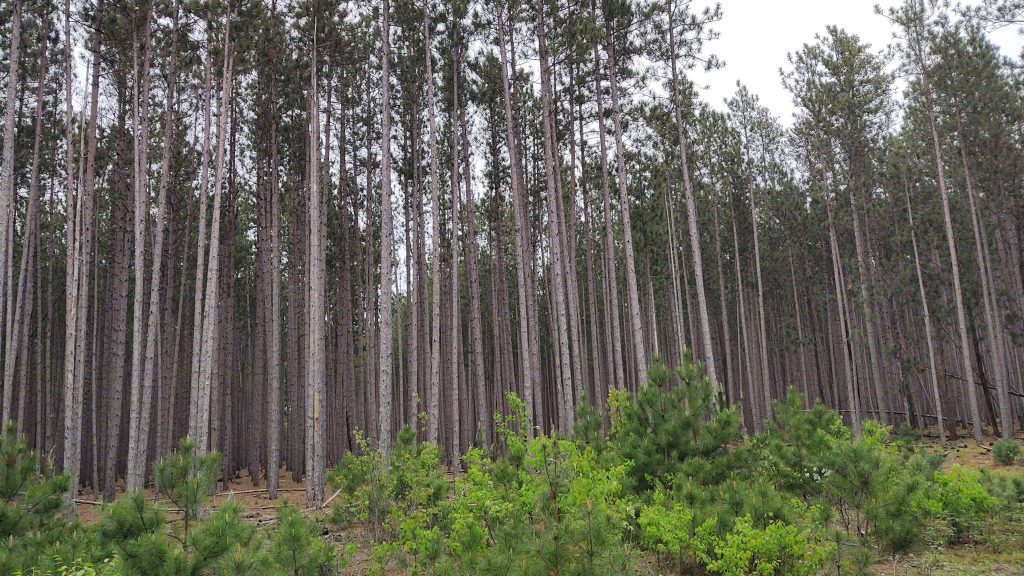
Thank you for joining Chuck and I on our investigation of the Big Prairie Desert. Visiting local museums can bring unique, first had accounts of an area. Please enjoy the video of our caper with the link below. Keep being curious!
Related Links:
Here’s our YouTube video of The Big Prairie Desert.
Restless Viking merchandise is available!
Resources
The Hub’s Article “Michigan’s Dust Bowl – The Big Prairie Desert”
Big Prairie Township Geological Trails – Howard Douglass and Velma Matson have organized history of the area.


